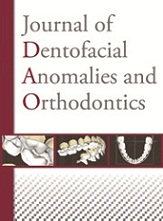No CrossRef data available.
Article contents
Missing maxillary canine
From diagnosis to treatment
Published online by Cambridge University Press: 21 September 2010
Abstract
When a maxillary canine has not appeared in the arch at its scheduled time of arrival, the treating dentist should make a precise analysis of the possible factors responsible for its absence and devise the best therapeutic plan for correcting the problem. Factors to be considered are its agenesis or the more likely possibility of anomalies of tooth size and eruption patterns. Deciding whether to bring an absent canine into place orthodontically or to replace it prosthetically or with an implant almost always constitutes a sort of therapeutic wager.
This article proposes a method for the systematic appraisal of the management of a missing maxillary canine using a decisional tree of the “in cases where” type. It allows for questionable issues to be grouped in logical order, starting with diagnostic procedures that lead to the beginning of a step-like therapeutic sequence that concludes, if it proves negative, with the development of an alternative to the initial treatment plan (fig. 1).
This arboreal schema is comprised of three parts:
1 – The first deals with diagnosis;
2 – The second takes up the start of treatment in consideration of the position of the tooth and the possibility of its being ankylosed or becoming ankylosed;
3 – The third is concerned with replacing the missing canine tooth in accordance with the dictates of implant or prosthetic therapy, or of an orthodontic solution to the problem.
- Type
- Research Article
- Information
- Journal of Dentofacial Anomalies and Orthodontics , Volume 13 , Issue 1: The canine , March 2010 , pp. 55 - 74
- Copyright
- © RODF / EDP Sciences, 2010




